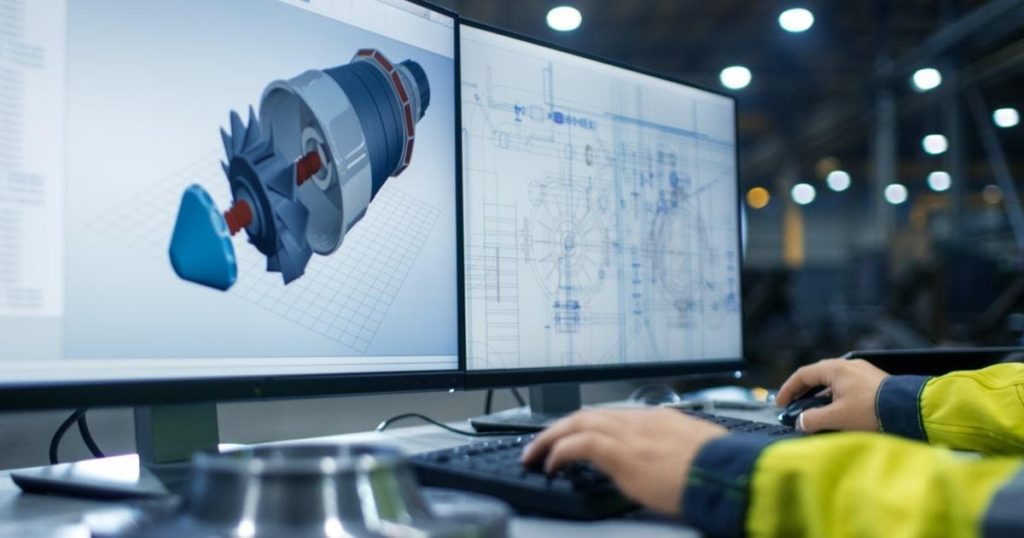Business
Benefits of Computer-Aided Design For Robust Business Growth
Computer-Aided Design or CAD is playing a transforming role to offer more flexibility in product design and development services.
With growing Industry 4.0 trends, companies, regardless of their industry, need better tools and platforms to offer more robust services to their customers. Be it automotive, architecture, manufacturing — businesses seek reliable solutions to cater to complex challenges. Computer-Aided Design or CAD is playing a transforming role to offer more flexibility in product design and development services.
The CAD software offers more freedom to engineers and designers for crafting more intricate geometries without compromising aesthetics or strength. On this note, check out the transforming benefits of CAD software across multiple industries.
Improved Productivity
Also Read: 10 passive Income businesses you can start while stuck at home
Leveraging CAD modelling, engineers can draft, create, and validate the design in a shorter turnaround time. CAD services let business owners lower down the production cost and improve the overall quality. As the software can deliver multiple jobs with higher accuracy, companies can operate their business even with smaller teams.
In traditional processes, engineers had to execute every design aspect manually, and it was a very time-consuming process. CAD overcomes all the manual error challenges by automating most of the complex tasks. Using CAD, engineers can visualize the product in detail at an earlier stage, which is impossible with the conventional approach.
Enhanced Quality Designs
CAD design and drafting services make it easier for designers to inspect the design and fix any possible error at early development stages. Designers can go back and forth their design and check out all potential issues why their plan is not delivering expected results. However, with conventional processes, designers need to do the design process repeatedly to fix the problems.
When the designers have the geometric data within CAD design, it becomes seamless to introspect and fix errors in shorter lead times. Be it preparing complex prototypes or creating a functional geometry, CAD delivers quality design output.
Reusability of 3D CAD Models
Reusability is the most significant advantage that drafting services offers to the workforce. Regardless of industry, reusability is a vital part of higher productivity. CAD software allows designers to reuse prebuilt design components and create multiple versions in a fraction of time.
Whether it’s the material, core geometry, or altering the supporting design of the main product — everything is easy to reproduce and repurpose for higher profitability.
In industries like automotive, fashion and consumer products where a single product has multiple variations, CAD saves a lot of time. Without redrawing any single concept, restructuring becomes convenient even for beginners.
Easy Interpretation
Understanding structural designs and reading the dimensions is prone to errors in traditional methods. The person who creates the design and the person who processes it in production may not be the same. It becomes a significant cause of manufacturing glitches.

CAD drawings solve this problem as it works the same for all designers, making the design interpretation error-free. The odds of human errors reduce significantly with this modern advancement. Technicians can draft any complex 2d drawing using CAD and share it with others for the different processes without attaching any instructional document.
Seamless Collaboration
When working with teams, design collaboration plays a crucial part in overall productivity. It’s easier for remote teams to collaborate and work on the design using CAD. As everything is synchronized with cloud storage, there is no possibility of data loss. All team members have all-time access to the 3d CAD design, which lets them work anytime they need.
Amid COVID-19, people are forced to work from their homes, and in this scenario, features like remote teams working in CAD are playing a life-saving role.
Also Read: What’s the cost of ignoring your employees’ emotional wellness to your organization?
Future of CAD Across Industries
With overgrowing customer demands, companies need to push their existing boundaries to deliver what’s in the trend. Advancements like CAD, CAM, and other design tools will help the workforce to innovate faster and turn ideas into functional products in a cost-effective manner. Be it fashion designing, architecture, or consumer industry — CAD brings more scalability to business, keeping the team size and other resources minimum.